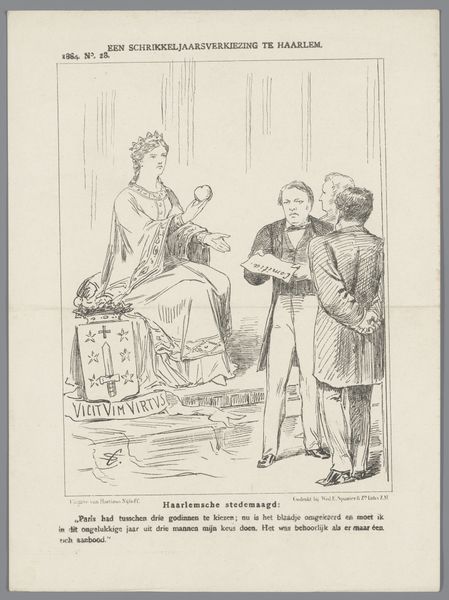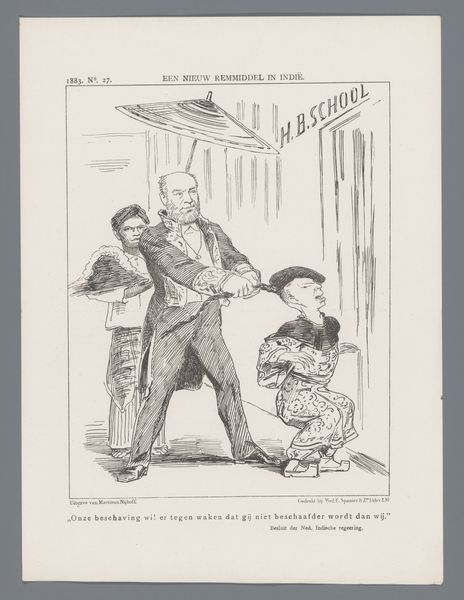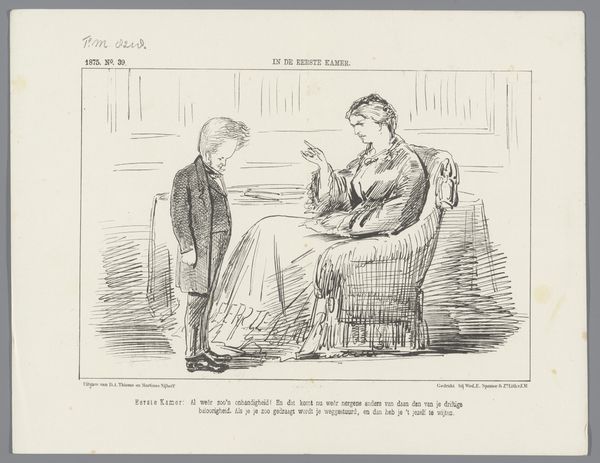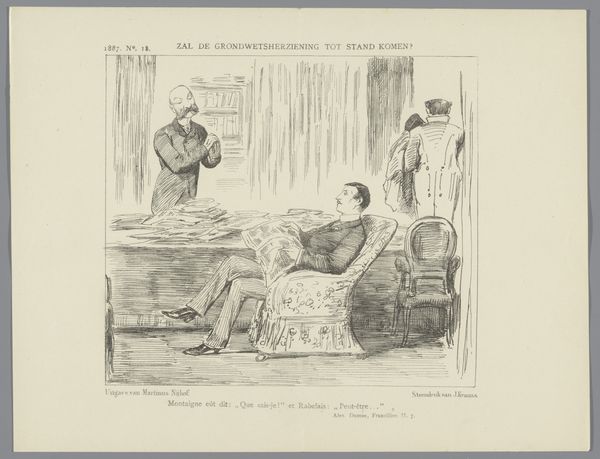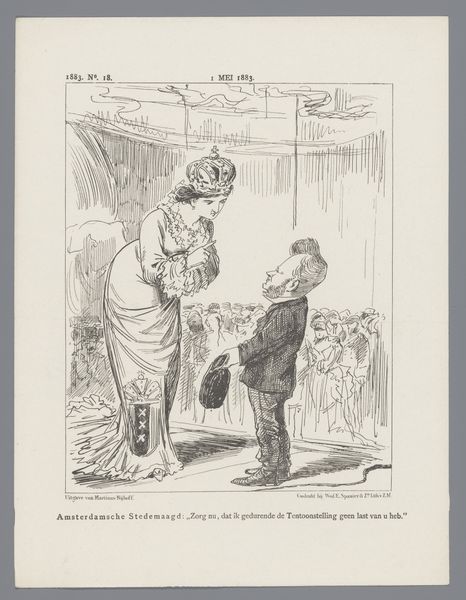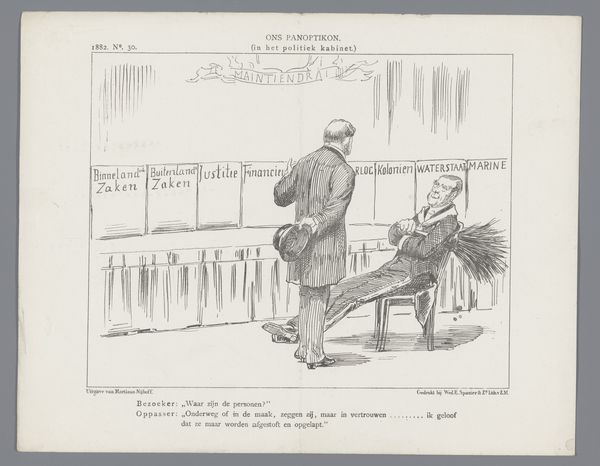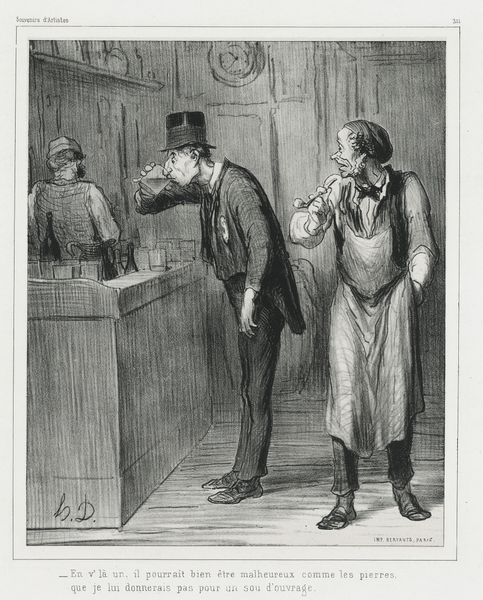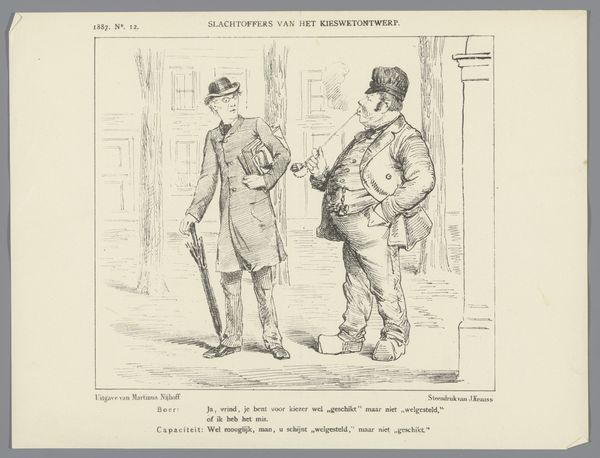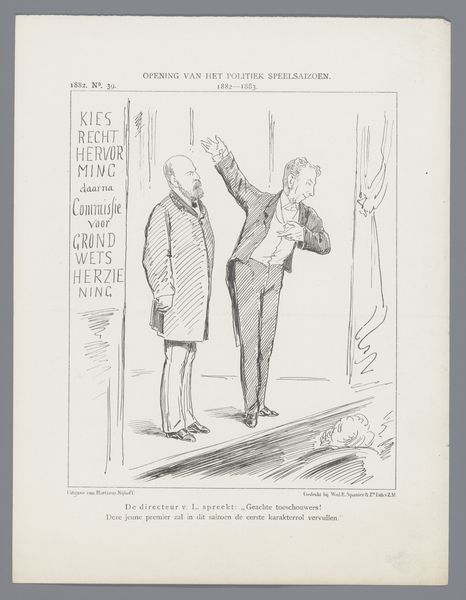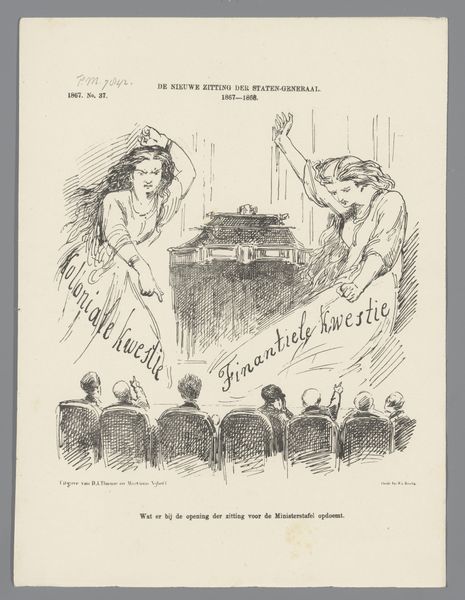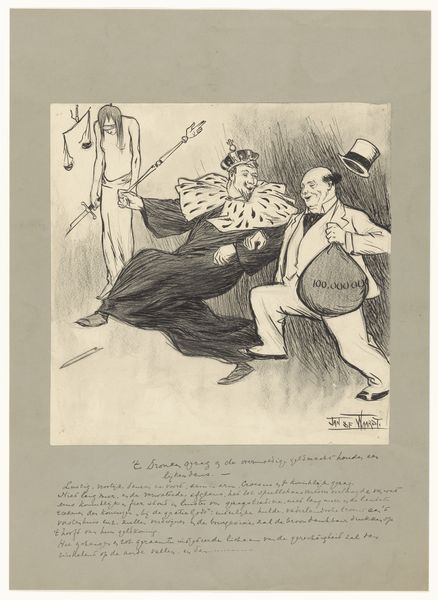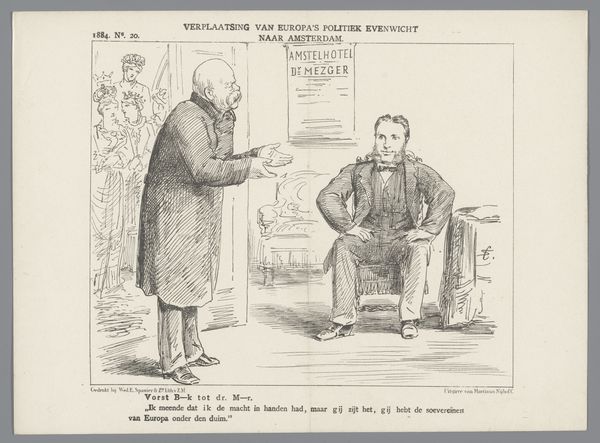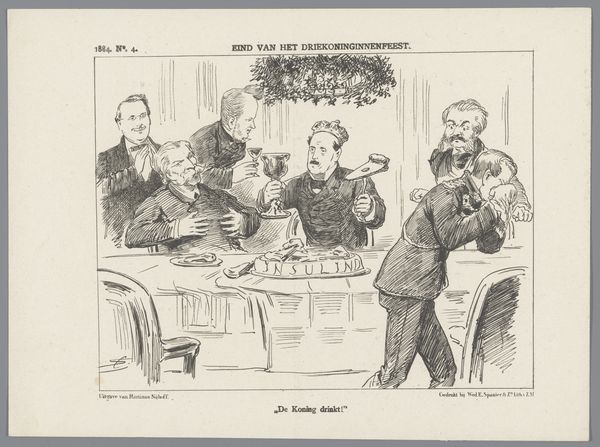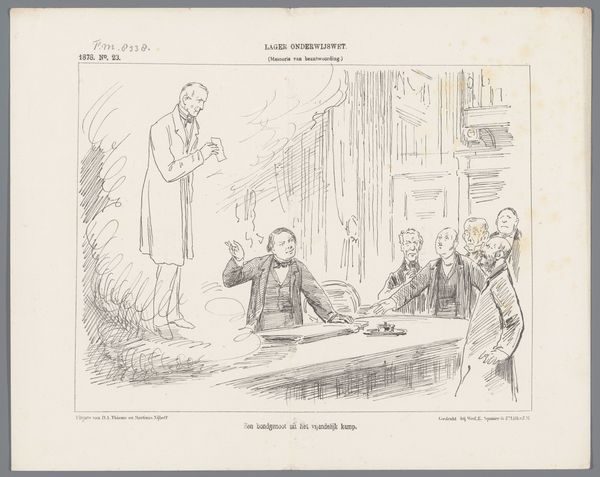
Dimensions: height 215 mm, width 275 mm
Copyright: Rijks Museum: Open Domain
Curator: Here we have a print from 1883 by Johan Michaël Schmidt Crans titled, "Political Cartoon About the Billiton Scandal." It seems to be made with ink. Editor: Immediately, I notice a clear tension in its composition. The figures seem rigidly posed, almost like a stage play frozen mid-scene, reflecting perhaps a staged reality behind the event it depicts. Curator: Absolutely, I find that the symbolism employed is very deliberate. You've got Lady Justice dominating the right side of the scene; and a figure being dismissed on the left who carries a clearly labelled bag referencing the "Billiton committee" investigation. Editor: And that's interesting from a material perspective too, given that printed political cartoons became crucial during this time period, informing and influencing public debate. What kind of paper was used for such widely distributed commentary? What was the labor required to produce such volumes? These all factored into the kind of imagery deployed and it’s reception by the population. Curator: It's definitely crafted as a didactic image. The bag labeled "colonies" alongside "Billiton committee" suggests the issues around colonial exploitation are the heart of this scandal. Look how "State Interest" as personified is expelling that figure toward the door as Justice points an accusing finger. It highlights a rupture in perceived moral authority, especially concerning the colonies. Editor: I can see how such direct iconography provided people with accessible, visual interpretations of complicated political processes and moral problems. Its availability depended on the development and refinement of cheap methods for mass producing printed media at the end of the 19th Century. Curator: And its romantic stylistic conventions give it added visual weight, almost transforming it into an historical moment rather than fleeting political satire. Editor: Exactly! Focusing on the production and dissemination offers clues about who the primary audience of this cartoon was meant to be. The print as an object, circulated and consumed, brings us back to questions of political action and its material means. Curator: Understanding the iconographic language helps us decipher its commentary, linking those past scandals to ongoing societal discussions about accountability and justice, especially concerning how the colonial powers behaved. Editor: Right, and looking at it through production, material means, the conditions for how it was created allows us to understand the society that could produce something like this.
Comments
No comments
Be the first to comment and join the conversation on the ultimate creative platform.
